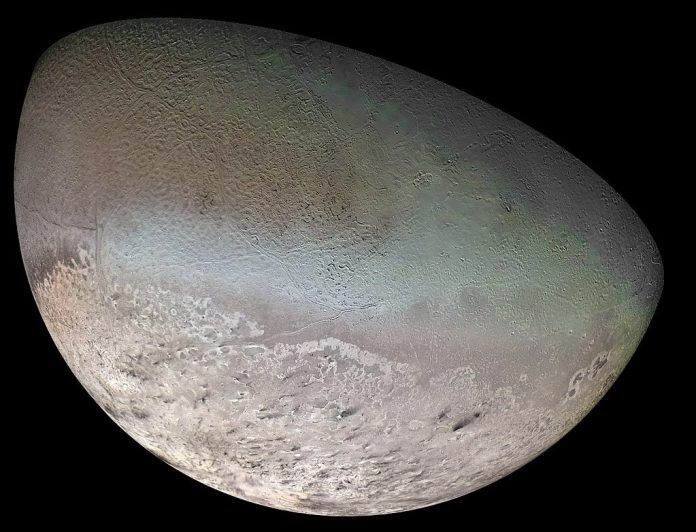
A town in the Austrian Alps might not seem like the most conducive place to come up with daring space missions.
But, for the last 40 years, students and professors have been gathering to do just that in Alpbach, just north of the Lichtenstein/Austrian border.
One outcome of the Alpbach Summer School this year was an idea for a combined Neptune / Triton explorer mission to take advantage of existing technology developed for the JUICE missions.
Before we get into the technical details of the mission, though, let’s dive into why scientists should care about the Neptunian system in the first place.
The last time we visited Neptune was with Voyager 2 back in 1989, and it was launched 12 years before that in 1977.
Technology has advanced significantly since then, and the limited amount of data Voyager collected at Neptune provided exciting insights into the planet. For example, its magnetosphere is tilted by 47 degrees.
Also, Neptune’s interior remains opaque, with our best guess being that it differs from the other gas giants. However, a lack of data makes further speculation difficult.
Triton, Neptune’s moon, is also interesting in its own right. It has a retrograde orbit, which implies that it is a captured Trans-Neptunian Object rather than a moon that formed from some violent event on Neptune itself.
It shows a significant amount of geological activity and shot a series of dark plumes into space during Voyager’s flyby, whose composition remains unknown.
Visiting these faraway worlds requires plenty of foresight, and many missions have been proposed.
The “Blue” team at the Alpbach summer school developed a two-pronged approach for this mission design – the Triton Unveiler & Neptune Explorer (TUNE).
This orbiter would hold most of the mission’s primary instrumentation and the Probe for Inner Atmospheric Neptune Observations (PIANO). One of the classes at the Summer School was space exploration acronym training.
TUNE, the orbiter, will be placed into a trajectory allowing it to orbit Neptune 600 times while using Triton to course-correct during its 40 flybys of the smaller moon.
Its payload would include a standard suite of sensors, including a radiometer, spectrometer, altimeter, and many other meters.
These instruments would help it complete its nine science objectives, which range from measuring temperature and pressure differences in Neptune’s atmosphere to determining Triton’s surface composition.
A second craft will help with several of those missions. PIANO has its own suite of meters, including a Nephelometer and helium sensor.
It is designed to be shot into Neptune and send data back to TUNE during its descent, allowing scientists to get a first glimpse into the interior of this enigmatic world.
Thanks to the Jupiter Icy Moons Explorer (JUICE) mission from ESA, most of the mission’s technologies already exist and have been flight-proven. While that lowers the overall development cost of the mission, other factors play into a sense of urgency for launch.
In the 2070s, the part of Triton that emits those dark plumes will enter a night phase that it will not leave for years, making it necessary to get there before that nuance of orbital mechanics makes the mission goals more difficult.
Given the long development time for some missions and the decade-plus journey to reach the last planet in the solar system, the sooner scientists and engineers start working toward the mission, the better.
But so far, none of the big space agencies have picked up the idea as a fully-fledged mission concept. Though we will eventually send another probe to Neptune at some point, unless one of them does pick up this mission, TUNE-PIANO might remain only a dream of one summer in the Austrian Alps.
Written by Andy Tomaswick/Universe Today.



